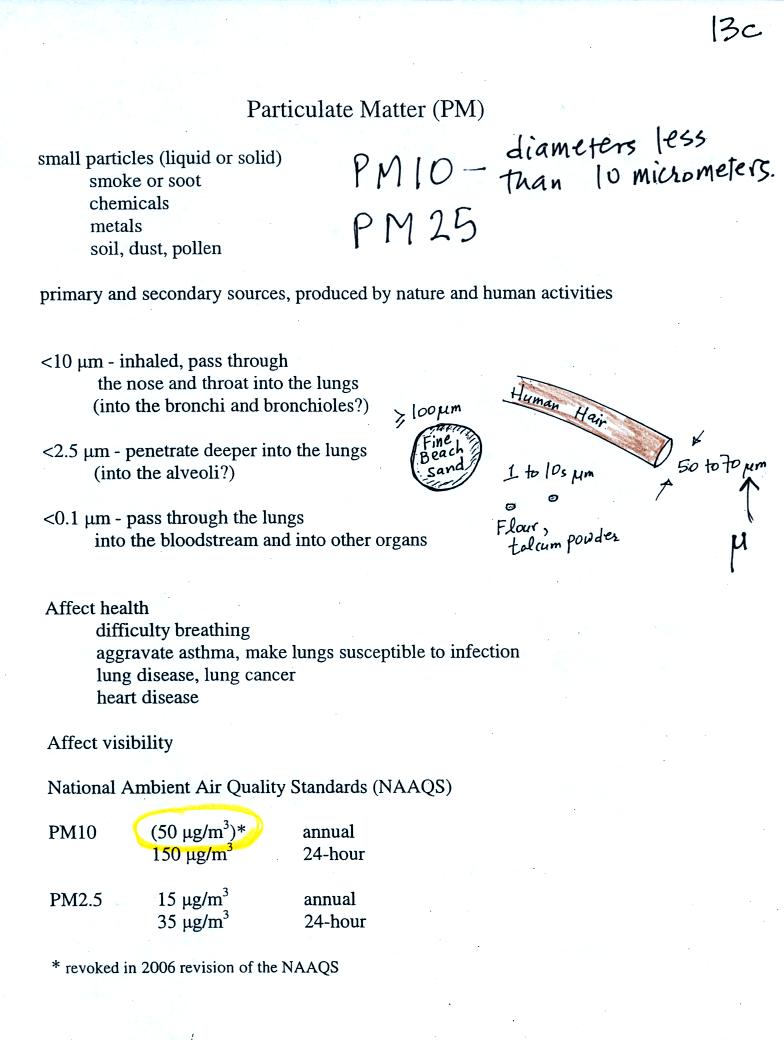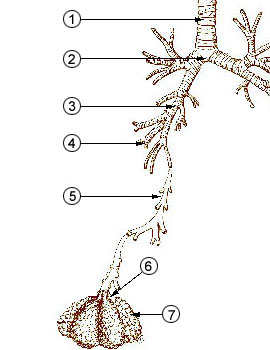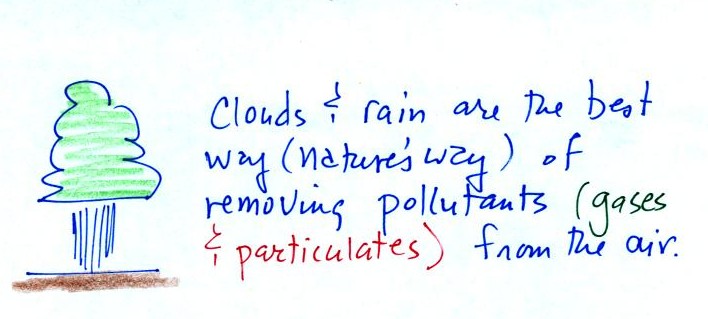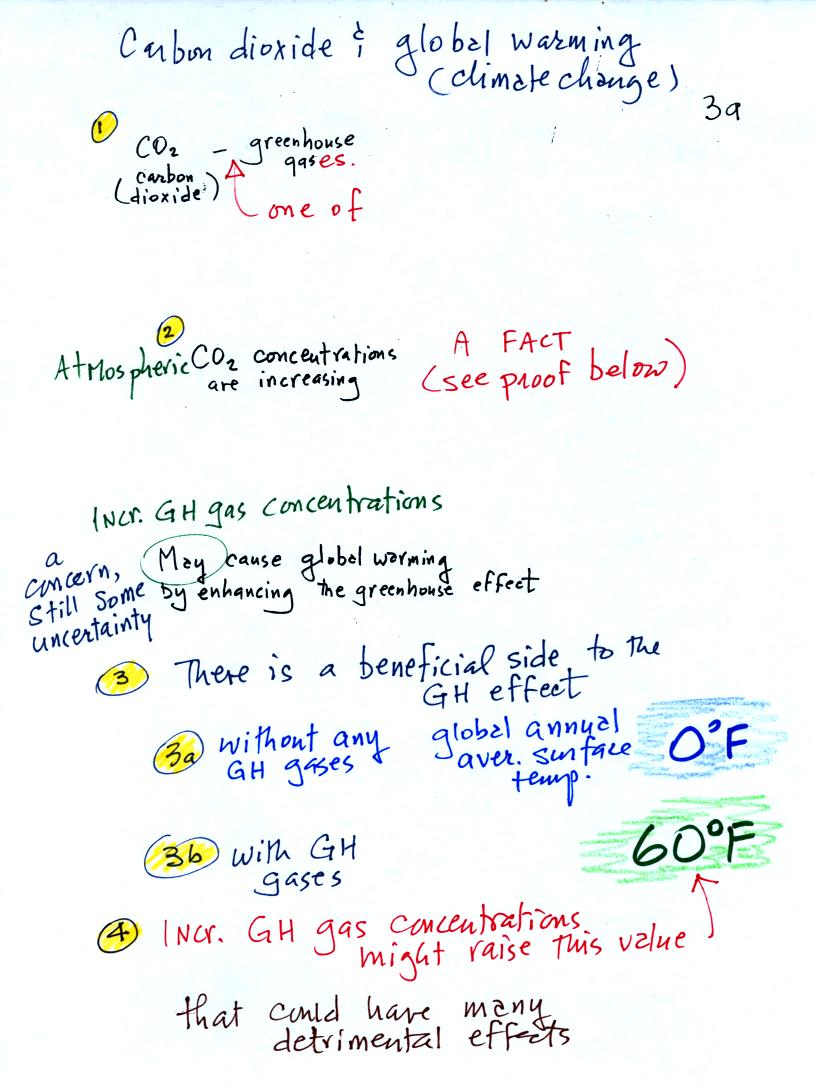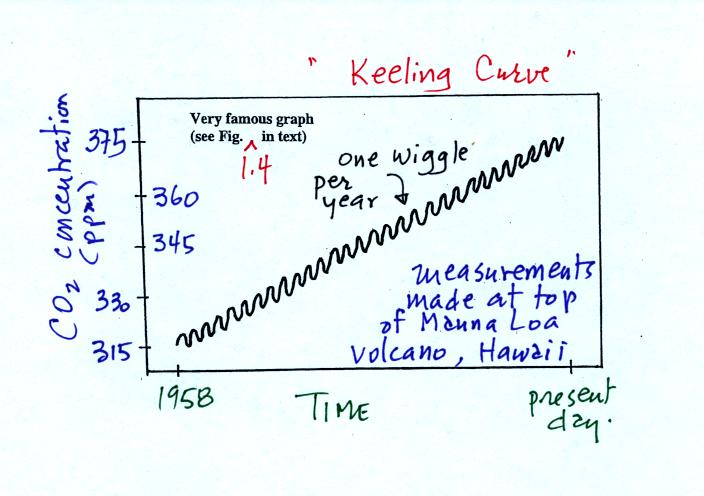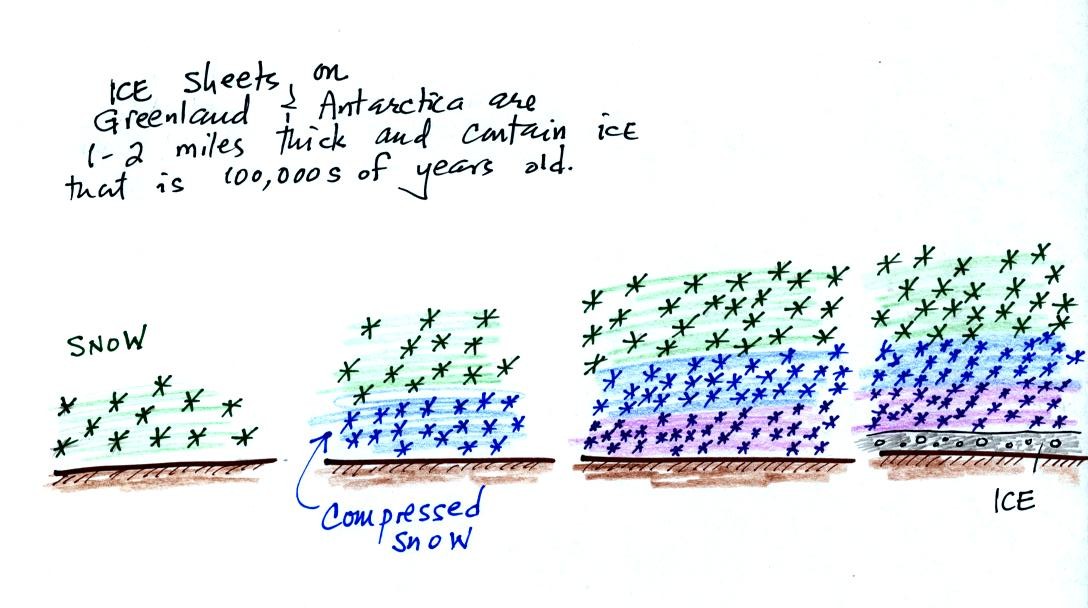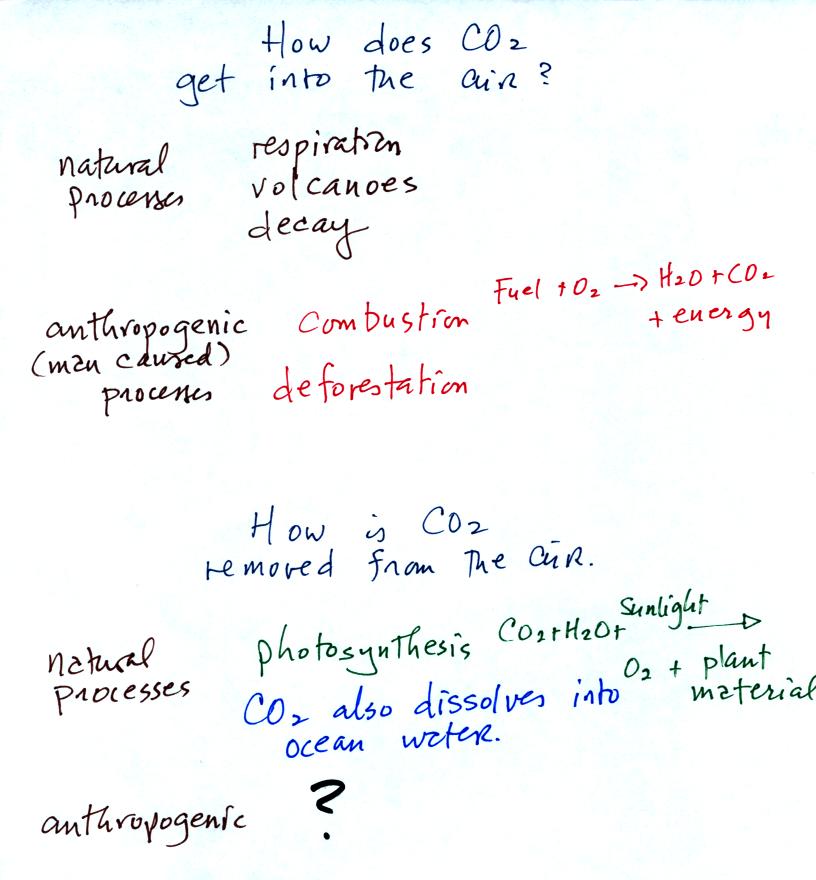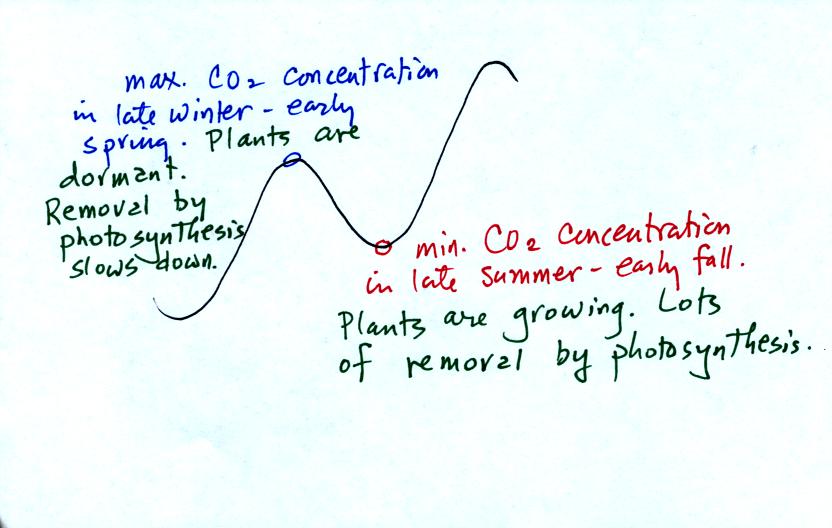Particulate matter can be produced
naturally (wind blown dust,
clouds above volcanic eruptions, smoke from lightning caused forest and
brush fires) and human activities produce particulates.
Particles with dimensions of 10 micrometers and less can be
inhaled
into the lungs (larger particles get caught in the nasal passages).
The figure below identifies some of the parts of the human lung
mentioned
in the figure above.
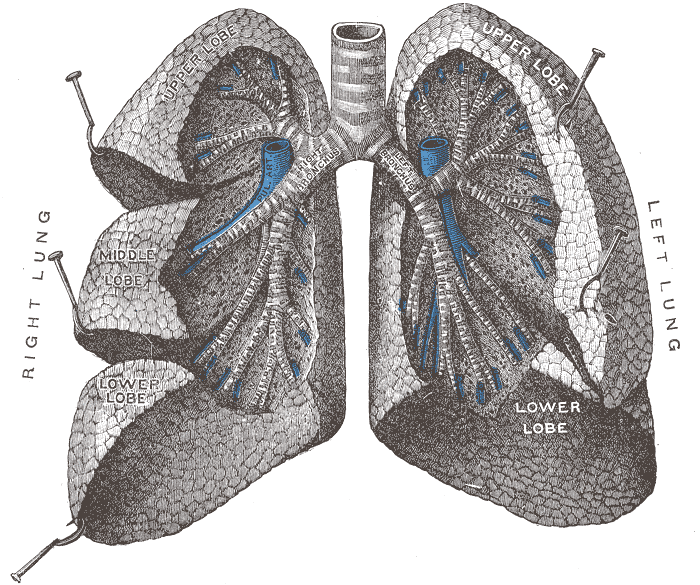
Crossectional view of the human lungs
from: http://en.wikipedia.org/wiki/Lung
|
1 - trachea
2 - mainstem bronchus
3 - lobar bronchus
4 - segmental bronchi
5 - bronchiole
6 - alveolar duct
7 - alveolus
from http://en.wikipedia.org/wiki/Image:Illu_quiz_lung05.jpg |
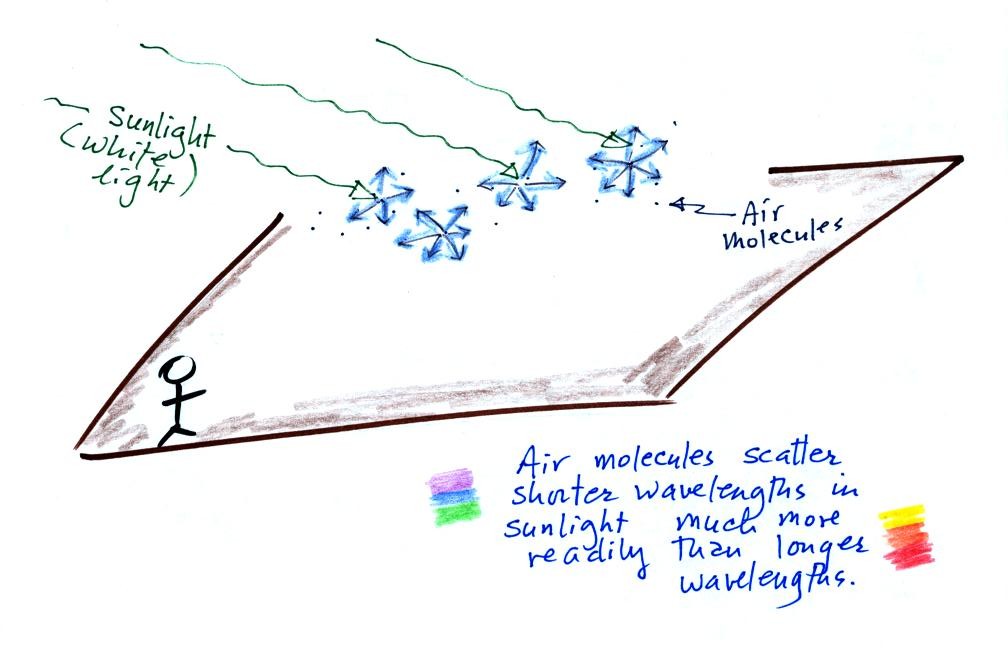
Air molecules scatter
sunlight. Because the air molecules are small (relative to the
wavelength of visible light) they scatter shorter wavelengths more
readily than longer wavelengths. When you look away from the sun
and toward the sky you see this scattered light, it has a deep blue
color.

Particles also scatter light
(remember the chalk dust used in the demonstration last week).
But because the particle size is about equal to or somewhat greater
than the wavelength of visible light the particles scatter all the
colors equally. The light scattered by particles is white.
As the amount of particulate matter in the air increases the color
of
the sky changes from deep blue to whitish blue. The higher the
particle concentration, the white the sky becomes.
Scattering
of sunlight by air molecules turns distant
mountains blue
and eventually makes them fade from view
(there is eventually much more sunlight being scattered by air than
there is sunlight being reflected by the mountains; there is a limit to
how far you can see even when the air is very clean).
A nearby mountain might appear dark green or brown. You are
mainly seeing light reflected off the mountain. As the mountain
gets further away you start seeing increasing amounts of blue light
(sunlight scattered by air molecules in between you and the
mountain). As the mountain gets even
further the amount of this blue light from the sky increases.
Eventually the mountain gets so far away that you only see blue sky
light and none of the light reflected by the mountain itself.
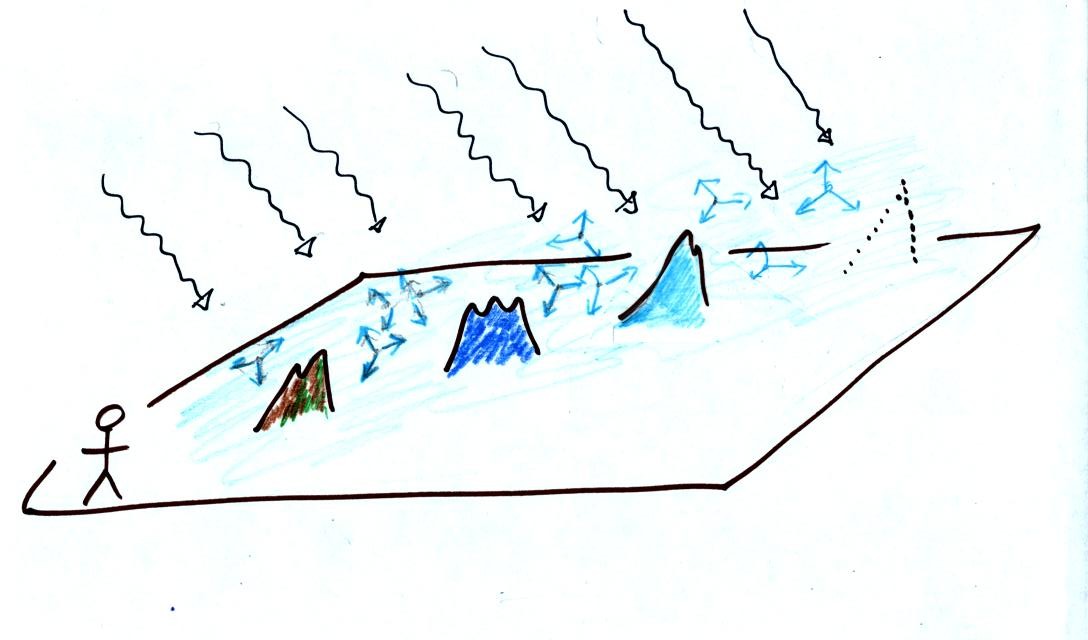
Note the PM10 annual National
Ambient Air Quality Standard (NAAQS) value of 50 micrograms/meter3 at
the bottom of p. 13c in the photocopied ClassNotes (shown above).
The following list shows that there are several cities around the world
where PM concentrations 2 or 3 times the NAAQS value.
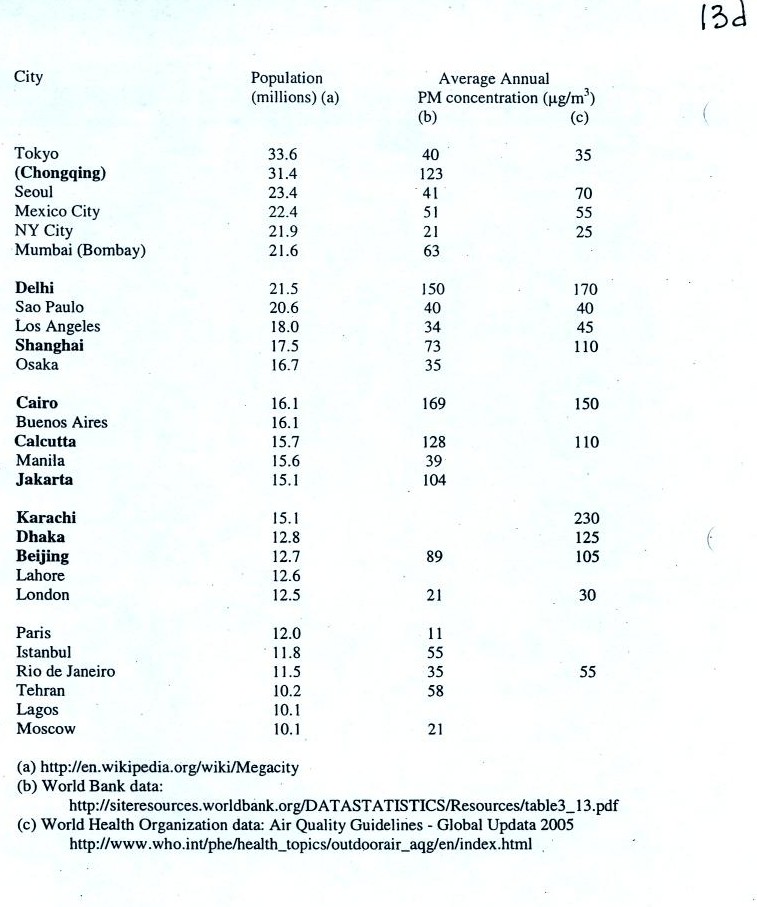
There was some concern this past
summer that the polluted air in
Beijing would affect the athletic competition during the Olympic
Games. Chinese authorities restricted transportation and
industrial activities both before and during the games in an attempt to
reduce pollutant concentrations. Rainy weather during the games
may have had the greatest effect, however. The figure below wasn't shown in
class.
